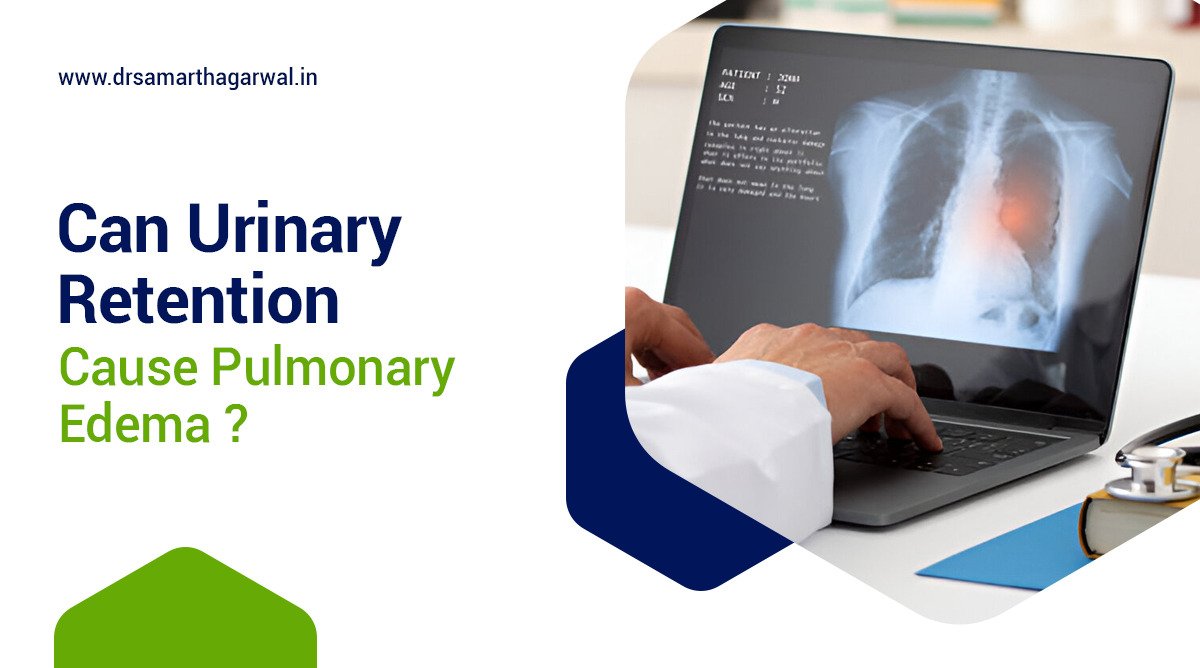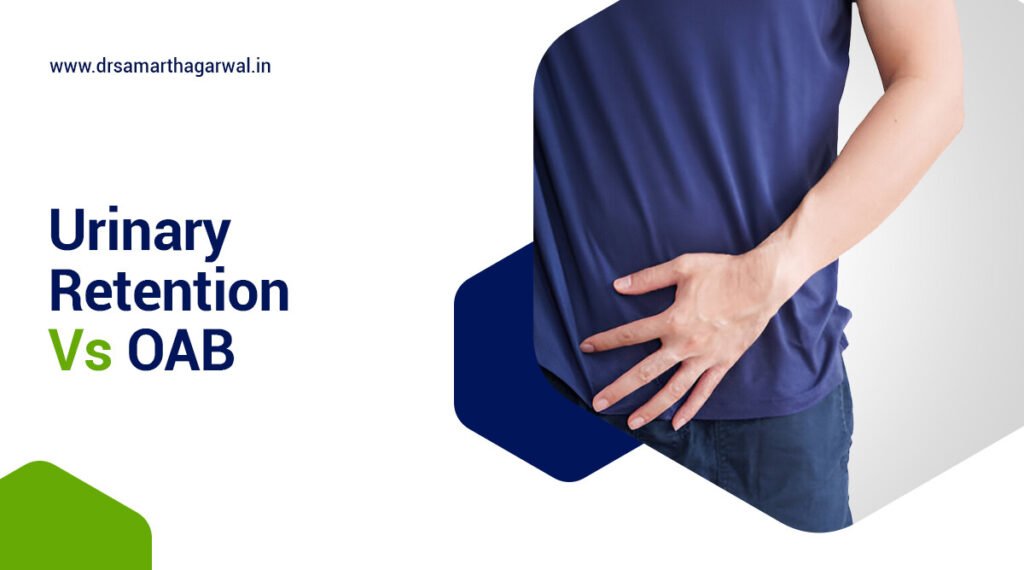Pulmonary edema, a condition characterized by fluid accumulation in the lungs, can pose serious health risks, including potential complications such as deep vein thrombosis and pulmonary embolism.
Urinary retention and associated urinary tract infections might play a role in its development. This article explores the connection between these health issues, outlining the mechanisms behind this link, such as bladder distention and urinary obstruction, and identifying key risk factors for pulmonary edema.
Treatment options for both urinary retention and pulmonary edema will be discussed, including bladder catheterization, nephrostomy tube insertion, and surgical drainage, along with preventive strategies to maintain health.
According to Trayes, K. P., Studdiford, J. S., Pickle, S., & Tully, A. S. (2013). Edema: diagnosis and management study, Historical case series suggested that pulmonary edema can occur in patients with acute kidney injury (AKI) without increased pulmonary capillary wedge pressure, indicating that increased pulmonary capillary permeability may be responsible for edema in the context of urinary retention and renal dysfunction.
Can Urinary Retention Cause Pulmonary Edema?
Urinary retention, a condition characterized by the inability to completely empty the bladder, can lead to several complications, including pulmonary edema.
Kawada, T., Yoshioka, T., & Araki, M. (2018). Deep vein thrombosis and pulmonary embolism secondary to urinary retention mentions a case report detailed a 75-year-old man who developed deep vein thrombosis (DVT) and pulmonary embolism (PE) due to urinary retention caused by detrusor insufficiency.
This condition occurs when excess fluid accumulates in the lungs, often as a result of urinary obstruction caused by factors such as benign prostatic hyperplasia, ureteral obstruction, or prostate cancer. Various processes, such as bladder distention and urine stasis, can contribute to this relationship between urinary retention and pulmonary edema, making it essential for healthcare professionals in the Emergency Department to recognize the signs and intervene promptly to prevent further complications, such as postobstructive diuresis or acute kidney injury.
Explanation of Pulmonary Edema and Role of Imaging Studies
Pulmonary edema is a medical condition characterized by an excess accumulation of fluid in the lungs, leading to impaired gas exchange and respiratory distress, which can become life-threatening if not promptly addressed. This buildup of fluid interferes with the lungs’ ability to transfer oxygen into the bloodstream effectively, creating a cascade of physiological issues that can severely impact overall health. As pressure builds in the pulmonary capillaries, fluid seeps into the interstitial spaces and alveoli, causing significant respiratory complications, which may necessitate pain management and intravenous fluids.
The physiological mechanisms behind pulmonary edema can vary, including factors such as increased capillary permeability, elevated hydrostatic pressure, or even decreased oncotic pressure from various causes. Symptoms often manifest as shortness of breath, coughing up foamy sputum, and a sensation of drowning or suffocation. In diagnosing this condition, healthcare providers may utilize:
- Chest X-rays to reveal fluid accumulation.
- CT scans for detailed lung structure analysis.
- Pulmonary function tests to assess gas exchange efficiency.
Timely recognition is crucial, especially considering potential complications like acute kidney injury, urosepsis, and electrolyte disorders, which may arise from underlying health issues. Utilizing appropriate fluid administration techniques, such as fractional urine removal and fluid replacement, can help manage fluid balance and reduce stress on the cardiovascular system, underscoring the importance of targeted treatment strategies in acute care settings.
Link Between Urinary Retention and Pulmonary Edema
The link between urinary retention and pulmonary edema can be attributed to the complications arising from urinary tract obstruction, such as ureteral obstruction and renal calculi, which can lead to increased bladder wall tension and fluid overload in the system.
When urinary retention occurs, it can significantly escalate fluid accumulation, resulting in pressure build-up that may force fluid into the lungs, ultimately leading to pulmonary edema. This condition not only elevates blood pressure within the cardiovascular system but also compromises respiratory efficiency, making it crucial to address urinary retention promptly.
Effective management techniques such as the following can be crucial in patient care:
- Bladder catheterization
- Nephrostomy tube insertion
can offer relief by facilitating urine drainage and reducing the risk of complications. While bladder catheters serve to directly empty the bladder, nephrostomy tubes provide an alternative route for urine passage when traditional pathways are obstructed. Both methods play a vital role in mitigating the effects of fluid overload, preventing vascular complications, and avoiding the serious repercussions associated with this condition.
What Are The Risk Factors For Developing Pulmonary Edema?
The risk factors for developing pulmonary edema include a variety of underlying health conditions, lifestyle choices, and acute medical events that can exacerbate fluid accumulation in the lungs, such as medication side effects and antihypertensive therapy.
How Is Pulmonary Edema Treated?
The treatment of pulmonary edema focuses on reducing fluid accumulation, improving oxygenation, and addressing the underlying causes, which can vary significantly between patients depending on the severity and context of their condition.
Treatment for Urinary Retention
Treatment for urinary retention typically involves relieving the obstruction through methods such as catheterization, surgical drainage, or bladder catheter insertion to facilitate urinary flow and manage bladder spasms.
In managing urinary retention, physicians often assess the underlying cause, which could range from benign prostatic hyperplasia to a neurological disorder or prostate cancer. A variety of treatment options are available to alleviate this condition effectively.
- Bladder catheters serve as a critical tool in patient management, allowing for temporary bladder drainage and providing relief while further evaluation is conducted.
- Surgical techniques may be necessary for patients with persistent or severe cases, including procedures to remove obstructions, such as a urinary stent, or reconstruct the urinary tract.
- Catheter irrigation and catheter drainage are frequently employed to prevent blockages, especially in patients with indwelling catheters.
Continuous monitoring is essential in managing urinary retention, as it helps identify any potential complications such as infections, catheter-related issues, or thrombus formation, ensuring that therapeutic interventions are timely and effective.
Treatment for Pulmonary Edema
The treatment for pulmonary edema often includes fluid administration management, medications such as diuretics, and addressing any acute kidney injury or acute renal colic that may be present.
To effectively manage this condition, healthcare providers must adopt a comprehensive approach that encompasses various interventions. Diuretics, particularly loop diuretics, are crucial in reducing excess fluid overload, helping to relieve pressure on the lungs and improve oxygenation. It is vital to monitor the patient’s response closely to these medications, adjusting dosages as necessary to optimize results.
- Fluid management is equally essential, as careful assessment of the patient’s fluid status ensures appropriate interventions that prevent further complications.
- In cases where acute kidney injury is evident, interventions to support renal function may also be incorporated.
Regular monitoring of electrolytes and kidney function tests is critical during treatment, allowing timely adjustments based on the individual’s progress and response to therapy. This tailored approach plays a significant role in enhancing patient outcomes.
How Can Urinary Retention and Bladder Spasm Be Prevented?
Preventing urinary retention involves addressing underlying health conditions such as benign prostatic hyperplasia, prostate cancer, and urinary tract infections that can obstruct urinary flow and contribute to retention. Additionally, ensuring timely urology consultation and nephrology consultation can aid in early detection and management of conditions leading to urinary retention.

Contact Dr. Samarth Agarwal if you have any questions or concerns about your Urinary health!





